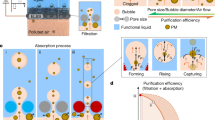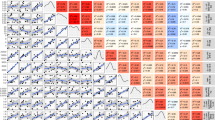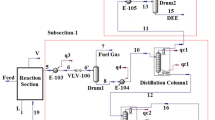Abstract
PURIFICATION methods which treat the concentration of a given impurity as a continuous quantity become ineffective when only a discontinuous distribution of that impurity is left in a material. Further purification is feasible on a dispersion principle which makes use of this discontinuity, and by which liquids have been observed free from particles at temperatures too low to cause the latter to be melted or dissolved.
This is a preview of subscription content, access via your institution
Access options
Subscribe to this journal
Receive 51 print issues and online access
$199.00 per year
only $3.90 per issue
Buy this article
- Purchase on SpringerLink
- Instant access to full article PDF
Prices may be subject to local taxes which are calculated during checkout
Similar content being viewed by others
References
Turnbull, D., J. App. Phys., 20, 817 (1949).
Turnbull, D., and Cech, R. E., J. App. Phys., 21, 804 (1950).
Mendenhall, C. E., and Ingersoll, L. R., Phil. Mag., 15, 205 (1908).
Vonnegut, B., J. Colloid Sci., 3, 563 (1948).
Cwilong, B. M., Nature, 155, 361 (1945).
Cwilong, B. M., Proc. Roy. Soc., A, 190, 137 (1947).
Langham, E. J., and Mason, B. J., Proc. Roy. Soc., A, 247, 493 (1958).
Thomas, D. G., and Staveley, L. A. K., J. Chem. Soc., 4569 (1952).
Turnbull, D., and Cormia, R. L., J. Chem. Phys., 34, 820 (1961).
Buckle, E. R., and Ubbelohde, A. R., Intern. Union Pure and App. Chem. Symp. Thermodynamics (1959).
Behrendt, S., thesis, Göttingen Univ. (1964).
Author information
Authors and Affiliations
Rights and permissions
About this article
Cite this article
BEHRENDT, S. Ultra-purification by Separation of Aerosol Particles. Nature 208, 581 (1965). https://doi.org/10.1038/208581a0
Issue date:
DOI: https://doi.org/10.1038/208581a0



